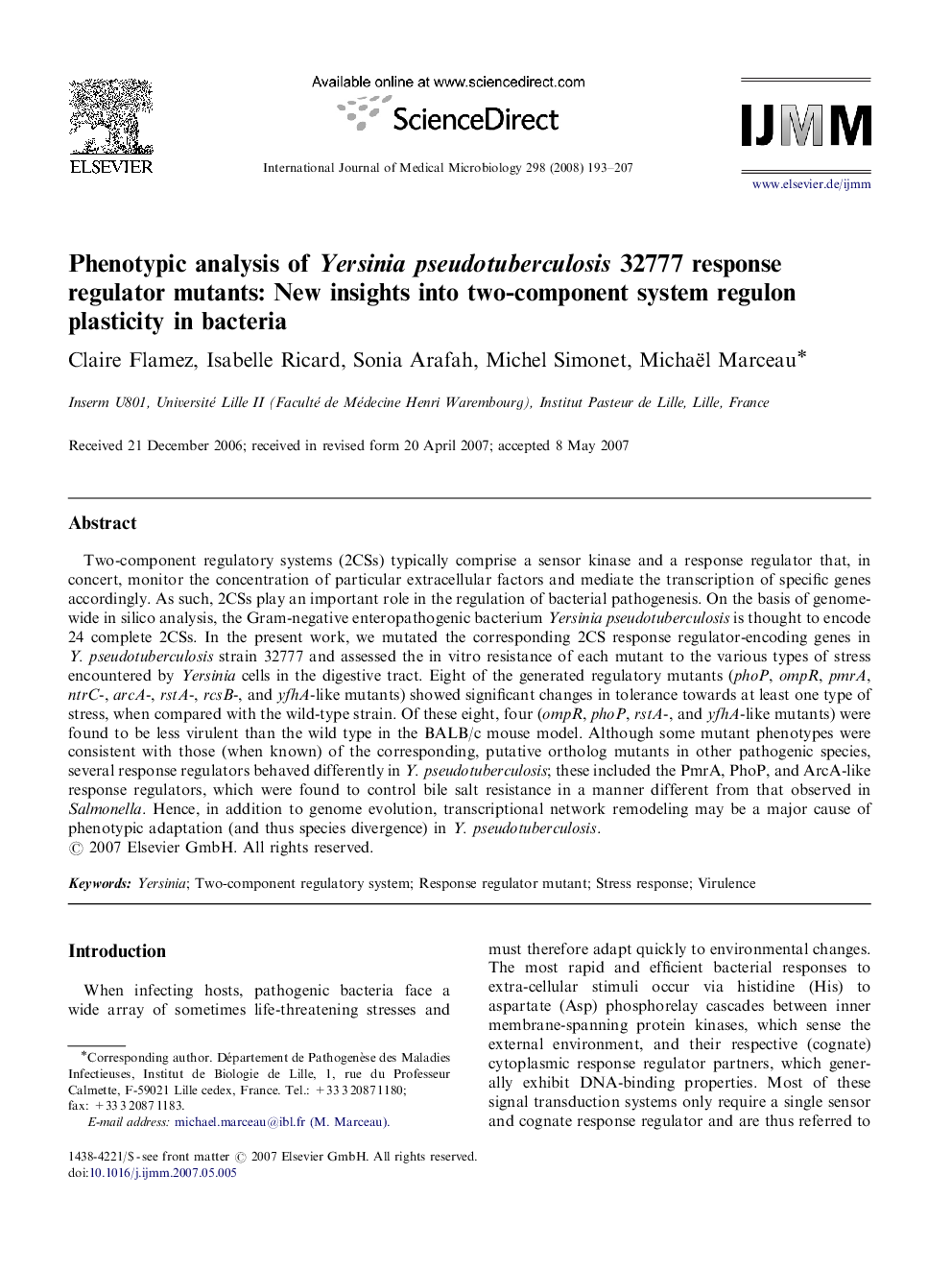| Article ID | Journal | Published Year | Pages | File Type |
|---|---|---|---|---|
| 2054929 | International Journal of Medical Microbiology | 2008 | 15 Pages |
Two-component regulatory systems (2CSs) typically comprise a sensor kinase and a response regulator that, in concert, monitor the concentration of particular extracellular factors and mediate the transcription of specific genes accordingly. As such, 2CSs play an important role in the regulation of bacterial pathogenesis. On the basis of genome-wide in silico analysis, the Gram-negative enteropathogenic bacterium Yersinia pseudotuberculosis is thought to encode 24 complete 2CSs. In the present work, we mutated the corresponding 2CS response regulator-encoding genes in Y. pseudotuberculosis strain 32777 and assessed the in vitro resistance of each mutant to the various types of stress encountered by Yersinia cells in the digestive tract. Eight of the generated regulatory mutants (phoP, ompR, pmrA, ntrC-, arcA-, rstA-, rcsB-, and yfhA-like mutants) showed significant changes in tolerance towards at least one type of stress, when compared with the wild-type strain. Of these eight, four (ompR, phoP, rstA-, and yfhA-like mutants) were found to be less virulent than the wild type in the BALB/c mouse model. Although some mutant phenotypes were consistent with those (when known) of the corresponding, putative ortholog mutants in other pathogenic species, several response regulators behaved differently in Y. pseudotuberculosis; these included the PmrA, PhoP, and ArcA-like response regulators, which were found to control bile salt resistance in a manner different from that observed in Salmonella. Hence, in addition to genome evolution, transcriptional network remodeling may be a major cause of phenotypic adaptation (and thus species divergence) in Y. pseudotuberculosis.
